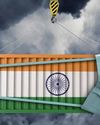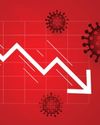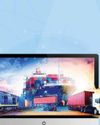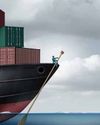
Q. How has business been for HAROPA ports this year? Laurent Foloppe: 2019 promises to be a good year for the ports on the Seine Corridor. At the end of October, seaborne traffic amounted to 77 million tonnes. The container industry is doing well (2.4 M TEU). In February, Mrs. Catherine Rivoallon was appointed by the Minister of Transport "integrator for the future single port facility," which, from January 2021 onwards, will combine the ports of Le Havre, Rouen and Paris. The objective of the integration of the 3 ports is to create a single-establishment enterprise and a powerful shipping hub, allowing them to play their full role in the competitive global marketplace.
Good news include the construction in Le Havre of the Siemens-Gamesa Renewable Energy offshore wind turbine plant, which is entering its build phase. Over and above trade and new set-ups onsite, the HAROPA ports have also ramped up their work as a Smart Corridor.
Q. How is HAROPA positioned among European ports in terms of size, geographical location and freight volume? Laurent Foloppe: Our geographical situation on the North European range is exceptional. HAROPA is the first port of call for imports and the last for exports. We are currently in fifth place in this range, but we have many assets that will enable us to continue to gain market share. The ports of the Seine Corridor deliver goods to a consumer marketplace that is among the largest in Europe. HAROPA is the leading container port for France's foreign trade, the largest exporter of grain in Western Europe and the leading French agroindustrial hub. Our strategy is designed to help gain market share in every sector, containers, of course, but also bulk, energy, vehicles and heavy-lift cargo.
Q. Indo-French trade is expected to reach €15 billion by 2020. Which products will stimulate trade?
Diese Geschichte stammt aus der January 2020-Ausgabe von Maritime Gateway.
Starten Sie Ihre 7-tägige kostenlose Testversion von Magzter GOLD, um auf Tausende kuratierte Premium-Storys sowie über 8.000 Zeitschriften und Zeitungen zuzugreifen.
Bereits Abonnent ? Anmelden
Diese Geschichte stammt aus der January 2020-Ausgabe von Maritime Gateway.
Starten Sie Ihre 7-tägige kostenlose Testversion von Magzter GOLD, um auf Tausende kuratierte Premium-Storys sowie über 8.000 Zeitschriften und Zeitungen zuzugreifen.
Bereits Abonnent? Anmelden

Impact Of Covid-19 On Shipping And Logistics
Industry stalwarts discuss threadbare the prevailing logistics and supply chain scenario and issues in clearing cargo during the COVID-19 lockdown

Digital Platforms Defy Lockdown
Digital trading modules such as eNAM are enabling farmers to move their produce from farm to market even during the lockdown

GARMENT TRADE TRAMPLED
As retailers face a shutdown in US and Europe, the cascading affect has caused mass cancellation of orders in Bangladesh

TRADE RESUMES WITH CHINA
While India has allowed uninterrupted movement of imports into Nepal even during lockdown, China is reopening its borders as it emerges from the pandemic
LESS HUMAN INTENSIVE, MORE DATA DRIVEN
AI provides transformational opportunity for logistics industry by improving customer experience, operational efficiency, faster turnaround time and lower cost while ensuring security and transparency. Macro environment requires industry to transform to be less human intensive, agile and data driven, all of which can be accelerated by AI adoption, shares Gangadhar Gude, Founder & CEO, atai.ai

SHAKEN AND STIRRED
The COVID-19 pandemic has partially paralysed the logistics and supply chain, but the industry is still deterred to ensure supply of essentials continues

TRADE STUCK, ECONOMY SLOWS DOWN
Sri Lankan economy slows down as trade deficit widens and supply chain disrupts amidst lockdown

LENDING INTELLIGENCE TO SUPPLY CHAIN
If you’re shipping millions of dollars’ worth of pharmaceuticals, high-end electronics, expensive seafood, or precious metals, what would you be willing to pay for the ability to ‘ask’ your shipment where it is right now and whether it’s ok? What would you pay for a freight smart enough to raise an alarm before it spoils? Artificial Intelligence enables that and much more…

CONTAINER LINES SIGNAL ‘SOS'
As the per-unit cost of operations increases many lines are forced to blank sailings which has hit their bottom line real hard. The Government and Terminal Operators therefore need to actively consider reduction in Vessel Related Costs

IMO 2020 And The Covid-19 Curse
The COVID-19 outbreak has shaken and stirred the already volatile bunker market. While the refiners adjust their capacities and shipping lines choose their path to compliance, the market dynamics are yet to reach an equilibrium